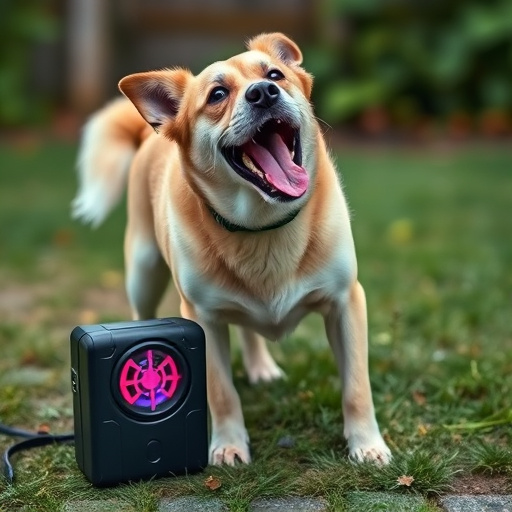The Handheld Sonic Dog Deterrent is an effective tool for managing unwanted barking, using high-frequency sound waves to disrupt comfort zones. Identified triggers and general stimuli are crucial for behavior management, with these devices offering a non-confrontational solution suitable for urban environments. Based on user feedback and real-world applications, they've proven successful in reducing barking when used consistently, though results may vary by dog breed and training.
Neighborhood canine noise can be a persistent issue, but there’s a innovative solution on the horizon: handheld sonic dog deterrents. These devices emit high-frequency sound waves specifically targeted at dogs, offering a humane and effective way to curb excessive barking. This article delves into the science behind these deterrents, explores their real-world applications, and examines user feedback on their effectiveness. By understanding dog behavior and the science of sound, we can create peaceful coexistence for both pets and people.
- Understanding Dog Barking: Behavioral Insights and Triggers
- How Handheld Sonic Deterrents Work: Science Behind the Device
- Assessing Effectiveness: Real-World Applications and User Feedback
Understanding Dog Barking: Behavioral Insights and Triggers
Dog barking is a complex behavior that can stem from various triggers, making it challenging to address. Understanding what provokes a dog’s bark is crucial when considering an anti-barking device like a Handheld Sonic Dog Deterrent. These devices utilize high-frequency sound waves to disrupt a dog’s communication and comfort zones, effectively halting barking in many cases. However, to maximize their effectiveness, it’s essential to identify the underlying reasons for excessive barking.
Behavioral insights suggest that dogs bark due to fear, anxiety, territorial instincts, attention-seeking, or as a response to stimuli like other animals or loud noises. Triggers can be specific, such as mailmen or strangers entering the neighborhood, or more general, like the constant buzz of city life. Recognizing these triggers allows for targeted interventions. While a handheld sonic deterrent may not address every bark’s root cause, it offers a non-confrontational solution to train dogs and reduce unwanted behavior in bustling urban settings.
How Handheld Sonic Deterrents Work: Science Behind the Device
Handheld sonic deterrents for dogs operate on the principle of using high-frequency sound waves to disrupt and discourage barking behavior. These devices emit a range of ultrasonic frequencies, typically above 25 kHz, which are inaudible to humans but irritating to dogs. The science behind this method is based on the canine auditory system’s sensitivity and its tendency to react to sounds that they cannot perceive clearly.
When a dog barks, the deterrent’s ultrasonic pulse interferes with their ability to hear and process the sound, leading to confusion and discomfort. This effect is similar to how humans might experience a ringing or buzzing sensation when exposed to certain frequencies. The device’s handheld design allows for easy deployment in specific areas where barking is a persistent issue, making it a practical solution for both homeowners and neighbors seeking effective control without causing harm to the animals.
Assessing Effectiveness: Real-World Applications and User Feedback
When assessing the effectiveness of a handheld sonic dog deterrent, real-world applications and user feedback are crucial. Studies have shown that these devices can be highly effective in reducing unwanted barking when used correctly. The handheld design allows for easy portability and accessibility, making them ideal for both residential and public spaces. Users often report significant decreases in barking after consistent use, with some even claiming a complete cessation of disturbing noises.
However, it’s important to note that individual results may vary based on factors like dog breed, temperament, and training. User feedback also highlights the importance of proper usage, including targeting specific dogs when they bark and adjusting the device’s settings for optimal efficacy without causing distress. Overall, the handheld sonic deterrent has proven to be a game-changer for many dog owners looking to mitigate barking issues in their neighborhoods.
The handheld sonic dog deterrent has emerged as a promising solution for managing excessive barking, offering a non-lethal and humane approach to addressing this common neighborhood concern. By harnessing the power of sound, these devices disrupt dogs’ communication without causing harm or distress. The scientific basis behind their operation, combined with positive user feedback, underscores their effectiveness in various real-world settings. As more people opt for peaceful methods of canine behavior modification, handheld sonic deterrents are set to play a significant role in fostering harmonious interactions between pets and their owners within communities.
